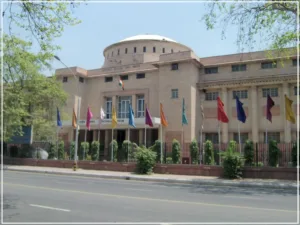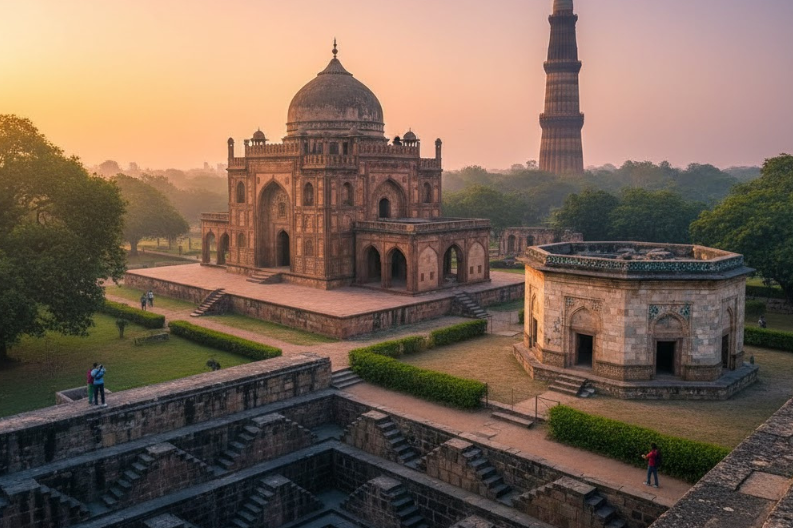There are many places in India which have been designed and established with the motive of preserving Indian culture and history. One of them is the National Museum of India in Delhi. The museum is a must-visit place to witness the amazing artefacts and decorative arts belonging to thousands of years before the augment of the new world.
This place ensembles and holds all these elements and information about them carefully in multiple galleries for Indian patriots to view and cherish their cultural heritage. Today, we will discuss the history and the important collections that the National Museum of India has in store for visitors.
An Overview of the Museum
The National Museum of India is amongst the largest Indian museums, located in the capital city. The museum boasts multiple works of art dating back to the prehistoric era.
Within this museum are the Institute of History of Art, Conservation and Museology. This has been a university since 1989 and provides master’s and doctoral courses within the premises for the fields of art history, museology and conservation.
In May 1955, then-Prime Minister Pt. Jawahar Lal Nehru laid its foundation. Later in December 1960, Dr S Radhakrishnan inaugurated it.
Things That Led to Its Creation
Very few people know the fact that initially, the Maurice committee under Sir Maurice Gwyer incepted the idea of creating a National Museum for India. Maurice Gwyer was the Chief Justice of India in 1946 when the committee led by him came up with this idea. As a result, they created a blueprint for the museum and its structure.
Later, London’s Royal Academy organised an Exhibition of Indian Art, in which they displayed a few Indian artefacts. This was a joint effort between the government of Britain and India. They carried out the exhibition at the Burlington House of London in 1947-48.
Inspired by the success of this exhibition, the collaborators decided to have a similar exhibition in Delhi, in which they displayed artefacts from different museums across India. The event turned out to be a huge success. As a result, the authorities embarked upon a journey to create a permanent exhibition of Indian artefacts in the form of the National Museum.
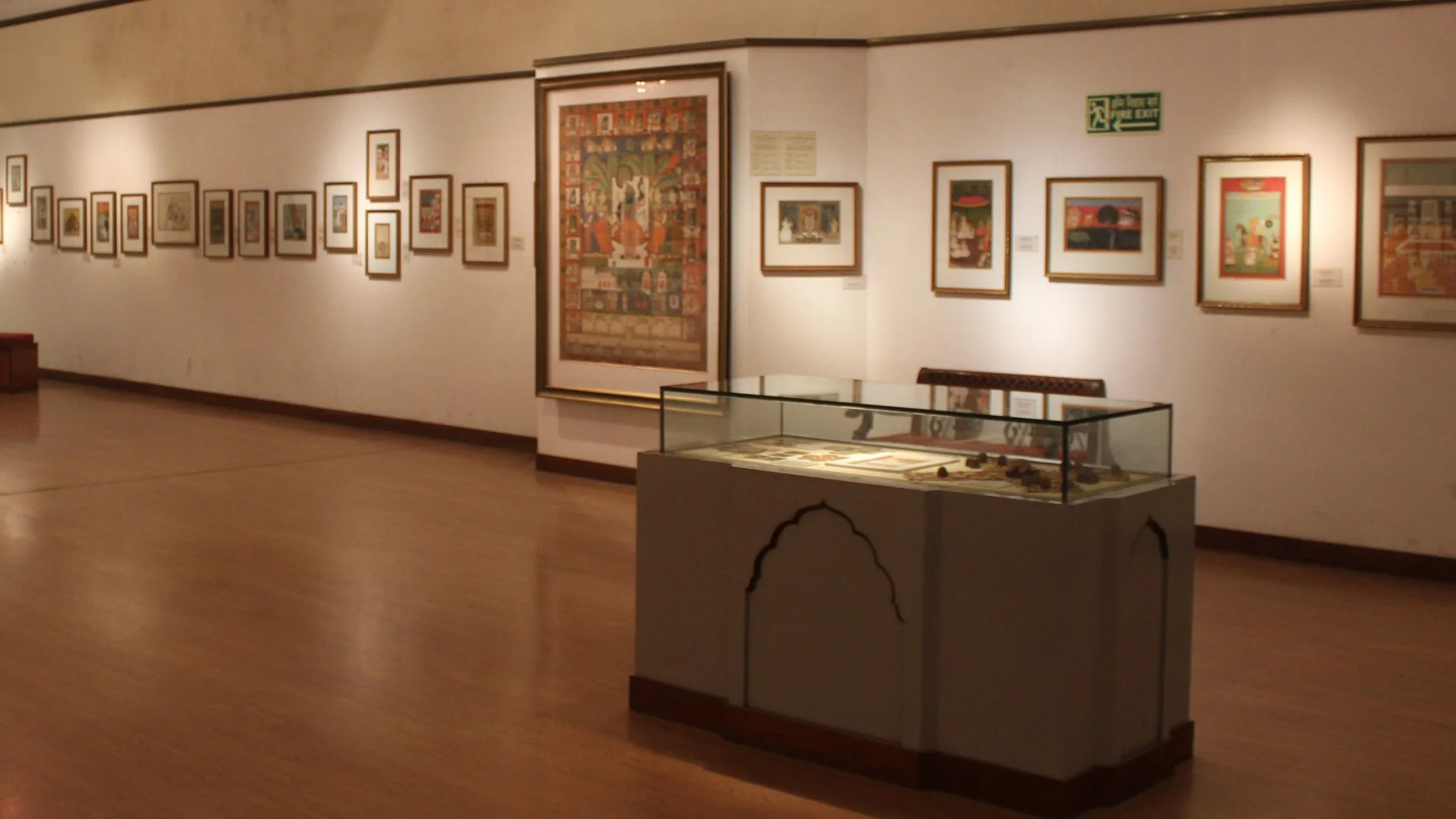
The stakeholders invited the contributors to gift or loan the artefacts to the exhibition, and most of the invited people happily donated. Consequently, the then Governor General of India, Shri R.C. Rajgopalachari, inaugurated the National Museum in the Rashtrapati Bhavan on August 15, 1949.
However, it was only in 1955 that a special building was designated for the National Museum and related works. Initially, the museum strived with gifts and loans. But later, the museum continued to expand its collection by purchasing and acquiring artefacts from various owners. This job was taken up by the Arts Purchase Committee.
Current Scenario
As of today, the Museum is home to over 2,00,000 objects, both Indian and foreign, which date back over five thousand years. They represent the growth and development of Indian culture over the years and preserve its heritage.
In the beginning, the task of maintaining and taking care of the museum was bestowed to the Director General of Archaeology. However, in 1957, the government passed over this job to the Ministry of Education under the Government of India. At present, the museum falls under the purview of the Ministry of Culture, GoI.
Prominent Collections at Delhi’s National Museum of India
The National Museum of India in Delhi is an amalgamation of various cultures and aspects of Indian heritage. It is the abode of a plethora of art structures, books, paintings, and all types of artefacts. The caretakers have done an amazing job compiling all these materials and bringing them under one roof. Also, the museum aims to offer unending information regarding all these elements to help the visitor grasp more about India’s splendid history and culture.
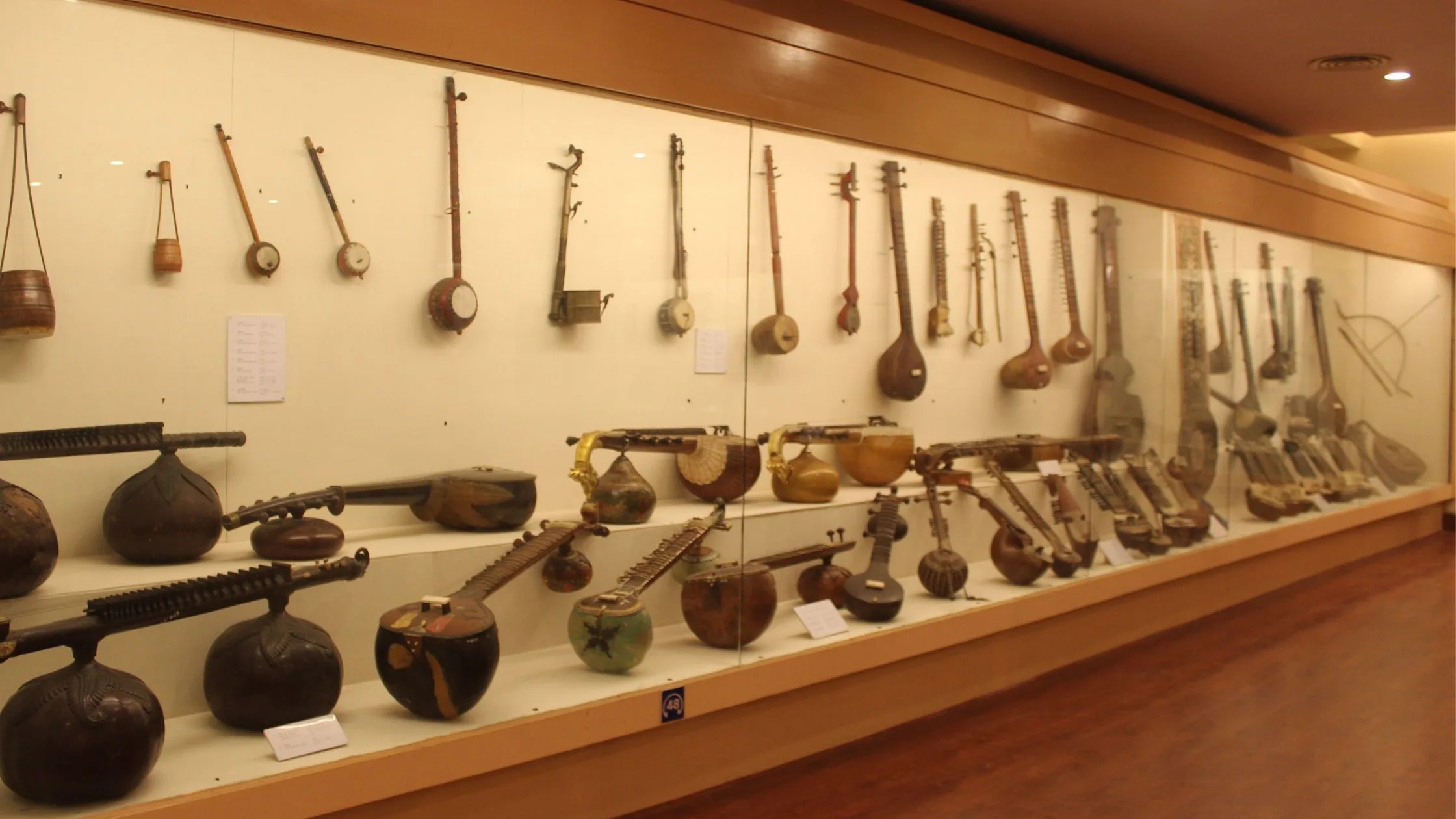
Departments
The museum does not simply have one theme, and thus it is divided into various departments which take care of each aspect. The departments in the museum are as follows-
- Anthropology
- Archaeology
- Arms & Armour
- Anubhav
- Central Asian Antiques
- Conservation
- Display
- Decorative Arts
- Education
- Jewellery
- Manuscripts
- Numismatics & Epigraphy
- Pre- Columbian Art
- Paintings
- Public Relations
- Publication
Collections
At the National Museum of India in Delhi, the collections represent every element of art, including archaeology, arms, jewellery, miniatures, manuscripts, painting, decorative arts, textiles, epigraphy, and much more.
It displays merely 6%-7% of its collections every day. The rest is displayed in exhibitions on a rotational basis. However, the museum is currently in expansion mode, after which it will be able to display an additional 3% to 4% of its belongings.
Some common collection types within the museum include the following-
-
Archaeology Collection
Various different art forms, such as Maurya Art, Kushan Art, Gupta Art, Sunga Art, etc., gave us numerous structures like Forts, Mausoleums, and Religious structures. The museum showcases instances such as sculptures and structures from those ancient buildings.
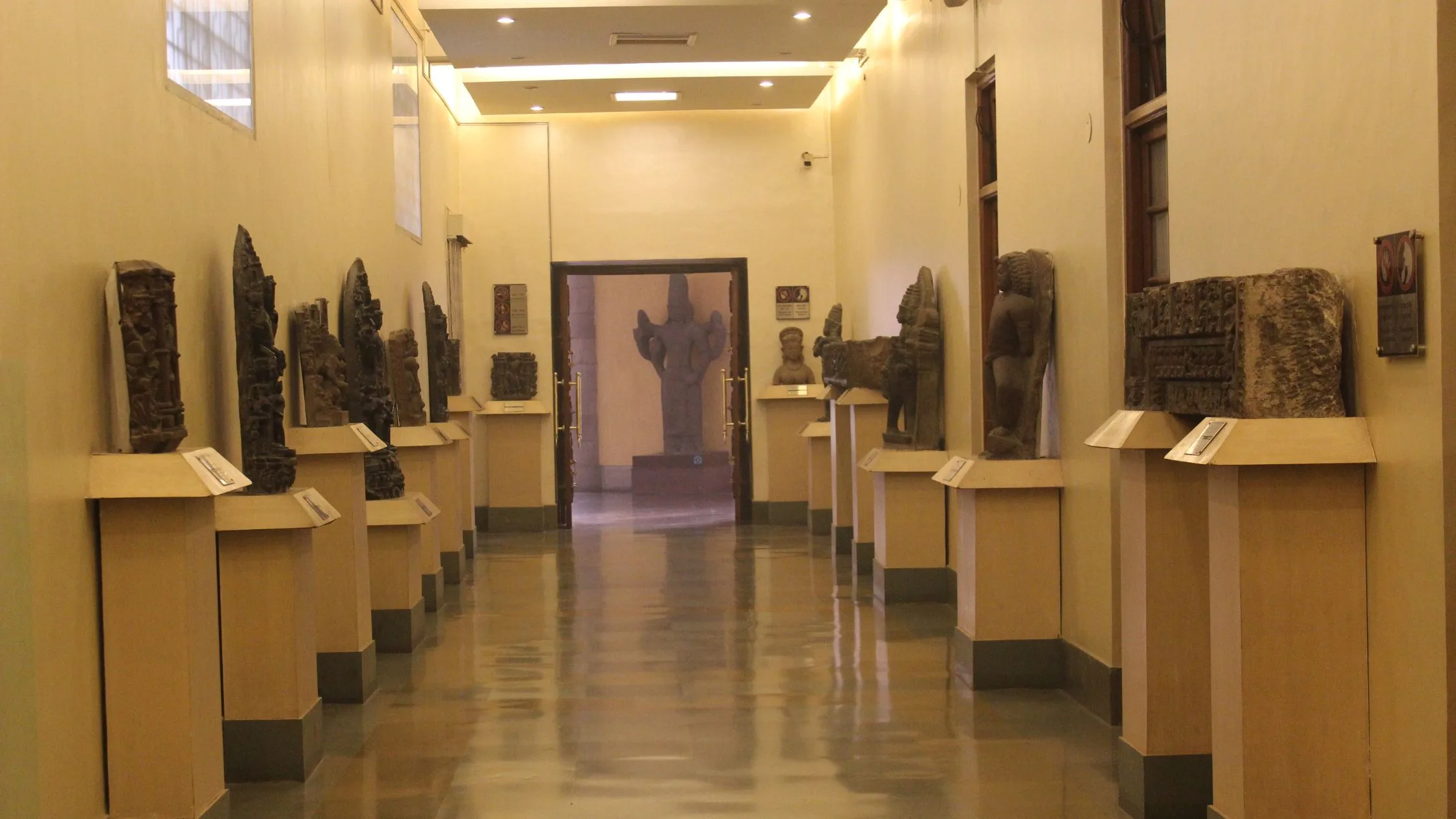
-
Arms and Armour
This includes weapons such as bows, daggers, shields, foot armour, animal armour, and essential swords. The museum also has some eminent pieces, such as the personal sword of Aurangzeb and a gunpowder flask from the battles in the 19th century.
-
Painting Collection
The National Museum of India has an extensive collection of paintings from the ancient, medieval and modern historical eras. These include the Deccani, Rajasthani, Mughal and Pahari paintings and many other miniature paintings.
-
Pre-historic Archaeology Collection
The excavation at the Harappan sites during the 20th and 21st centuries brought out various objects such as seals, pottery, weights, jewellery, skeletons, Bronze and terracotta figurines, etc.
-
Manuscripts
There are over 14,000 manuscripts present at the museum, which come from various ancient schools and are in multiple languages. The languages of the manuscripts are foreign, including Chinese, Arabic, Persian, Burmese, etc., or Indian, such as Awadhi, Braj, Rajasthani, Maithili, etc.
-
Jewellery
The jewellery section at the museum, also known as “Alamkara”, has a huge collection of jewellery items from multiple eras. There are over 250 items here which include anklets, bangles, earrings, necklaces and a lot more forms of jewellery for both men and women.
-
Central Asian Antiquities Collection
This section includes artefacts from the historical civilisations of Central Asia. It includes Chinese, Uigurian, Hellenistic, Tibetan, etc. This collection, derived from the Silk Route (as it was called in the past), was discovered by Sir Aural Stein during his various expeditions.
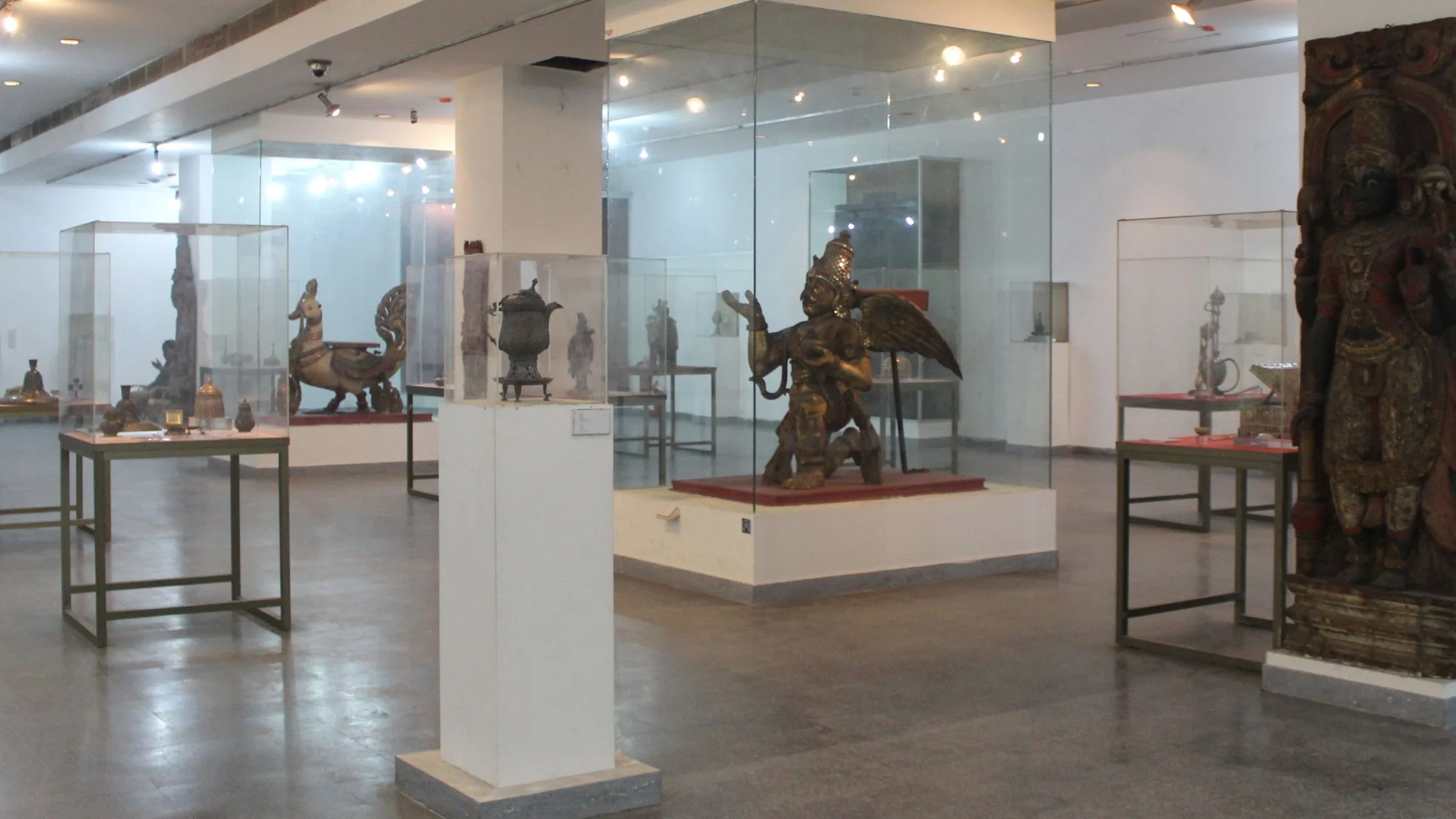
-
Decorative Arts
There are various elements which do not come into any category but are arts of some form. These are kept in the section on decorative arts. The objects which the people in the historic era created with their hands and craftsmanship are in this section. These include wood carvings, metal utensils, textiles, and other forms of decorative art.
Events
Under its learning and outreach program, the National Museum of India in Delhi hold a lot of amazing events and exhibitions for visitors. This includes exhibitions on special days to commemorate a particular era or object.
Apart from that, there are multiple lectures at the museum, where prominent national personalities talk about a particular event or era. These give essential historical insights to the visitors.
The museum also hosts seminars and conferences to talk about various historical aspects at its special exhibition place. Some recent events of prominence include-
- Rajas, Nawabs And Firangis
- Unknown Masterpieces Of Himachal Folk Art
- Jewels Of India- Nizam’s Jewellery Collection
- Baluchars- The Woven Narrative Silk Of Bengal
- The Story Of Rama- Indian Miniatures
- Horses In Indian Painting
- Pre Kashi Silk
When you visit the website of the National Museum of India, you can also get a virtual tour while sitting at your home. Consequently, you can have a look at all the artefacts and learn more about them without actually visiting the museum!

Final Words
People often fail to recognise the importance of staying connected to their roots and culture. However, when you visit the National Museum of India in Delhi, it instils a sense of patriotism and love for Indian culture within your heart.
Watching the tremendous collection of amazing pieces can be overwhelming for some. It is a bliss to the students, just like the National Science Centre of Delhi, but has more focus on Arts. Learning about the exciting history of these artefacts gives you the chills and takes you back to the era you are reading about.
To truly immerse in a splendid historical experience, you must plan a wholesome trip to the National Museum of India for sure. Take your family, especially your children, with you, and together, learn about the glorious Indian history and appreciate it.

